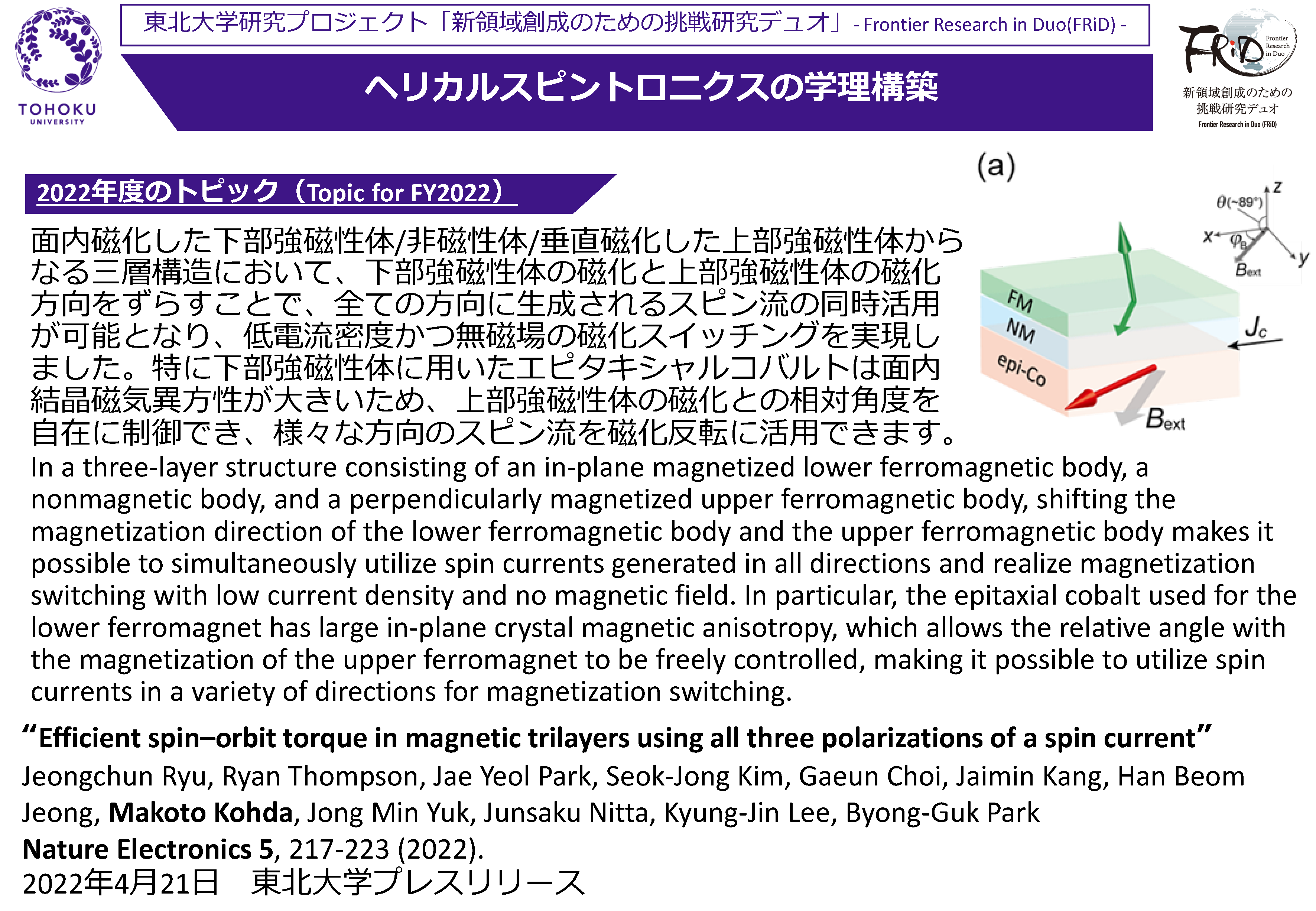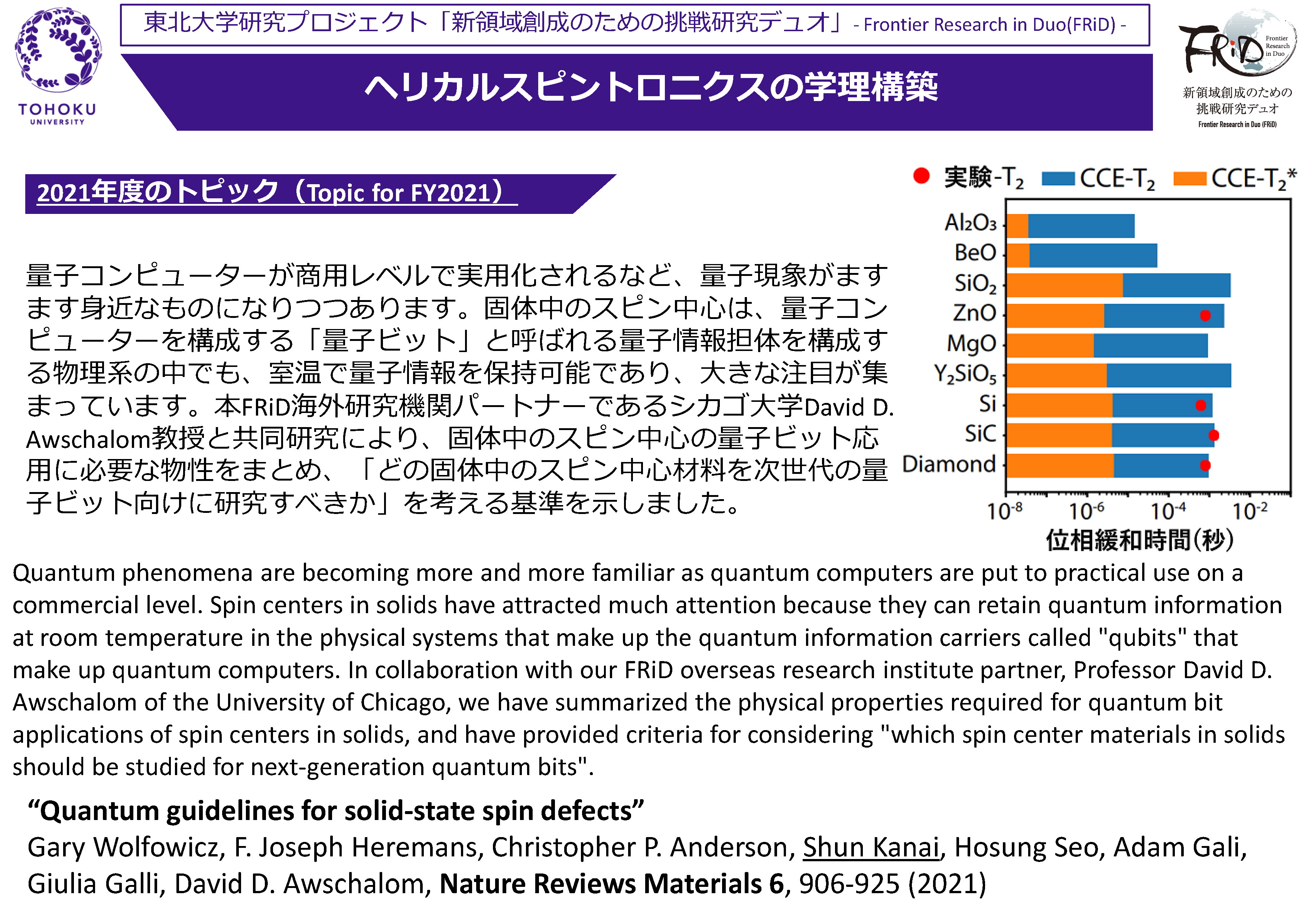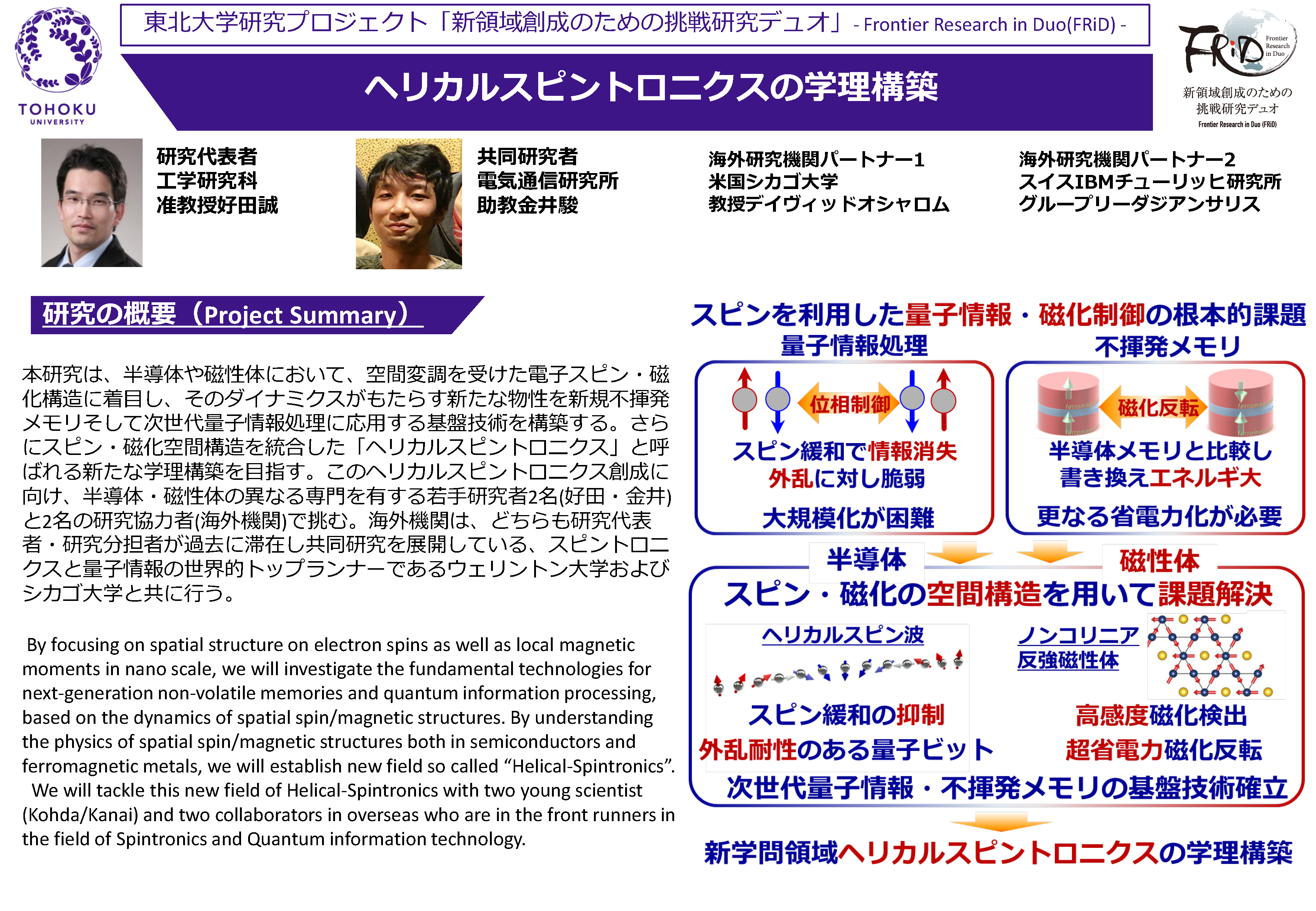Researcher name
Project Summary
By focusing on spatial structure on electron spins as well as local magnetic moments in nano scale, we will investigate the fundamental technologies for next-generation non-volatile memories and quantum information processing, based on the dynamics of spatial spin/magnetic structures. By understanding the physics of spatial spin/magnetic structures both in semiconductors and ferromagnetic metals, we will establish new field so called “Helical-Spintronics”.
We will tackle this new field of Helical-Spintronics with two young scientist (Kohda/Kanai) and two collaborators in overseas who are in the front runners in the field of Spintronics and Quantum information technology.
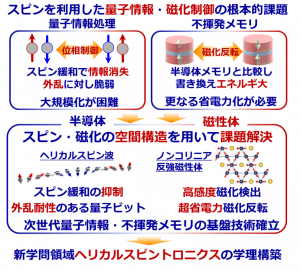
Results
【2022】
【2021】
【2020】
【2019】
1.Spin transfer torque from heavy metal to molecular magnet (H. Gamou et al., Nano Letters 20, 75-80 (2020).)
Platinum holds strong spin-orbit interaction (SOI). Recent study also shows additional SOI at the surface and interface due to the breaking of structure inversion symmetry. (J-C. Ryu et al. Phys. Rev. Lett. 116, 256802 (2016)).
Here, we demonstrated the strong reduction of phase coherence in Fe(II)-phthalocyanine (FePC) / platinum (Pt) interface (Fig.1) and showed the possibility for spin transfer between FePc and Pt. Figures 2(a) and 2(b) show magneto-conductance with different temperatures for FePt / Pt and metal-free phthalocyanine (H2PC) / Pt structures, respectively. In H2PC/Pt, weak antilocalization was observed in low temperature, indicating the spin relaxation in Pt. However, FePt/Pt did not show any quantum interference effect. This implies the enhancement of phase decoherence by the molecular magnets. By the detailed magnetoresistance measurement, we pointed out the possibility for spin transfer from Pt to FePc.
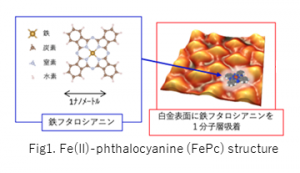
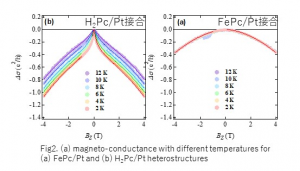
Press Release
2025.01.27: Exploring a New Qubit with the Gemstone Spinel
2023.08.04: Unveiling the Anomalous Dynamics of Non-collinear Antiferromagnets
2022.07.12: Researchers Develop a Scaled-up Spintronic Probabilistic Computer
2022.04.25: Researchers Unveil a Highly Efficient Means to Reverse Magnetization with Spin Currents
2022.04.22: A Mathematical Shortcut for Determining Quantum Information Lifetimes
2021.11.30: Memristive Spintronic Neurons: Combining Two Cognitive Computing Nano-elements into One
2021.05.21: A new spintronic phenomenon, chiral-spin rotation, found in non-collinear antiferromagnet
2021.04.30: A New Guideline for the Solid-state Spin Qubit
2021.03.19: Demonstrating the World’s Fastest Spintronics p-bit
2020.08.17: Energy-Efficient Tuning of Spintronic Neurons
2020.07.29: Spin, Spin, Spin: Researchers Enhance Electron Spin Longevity through International Collaboration




